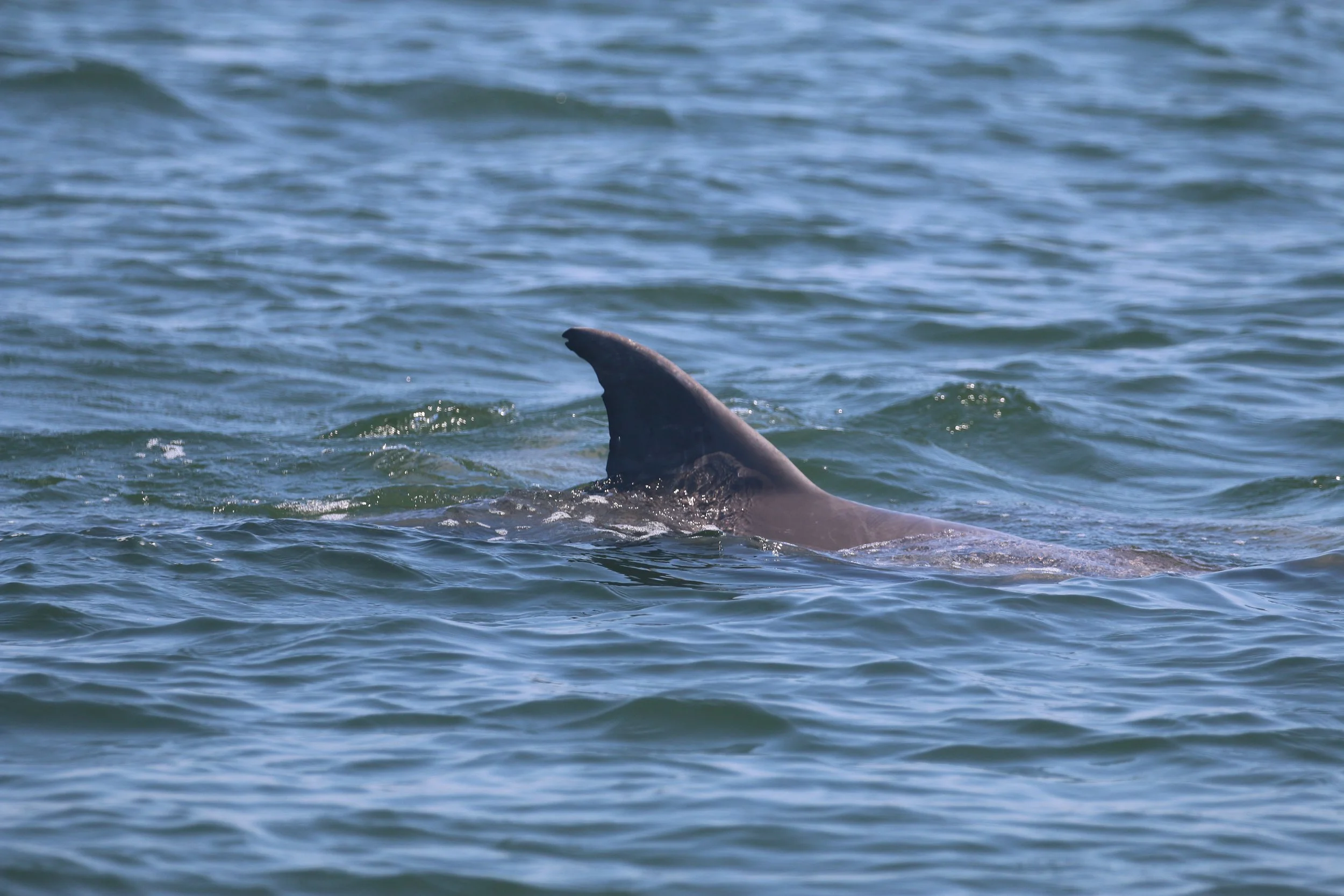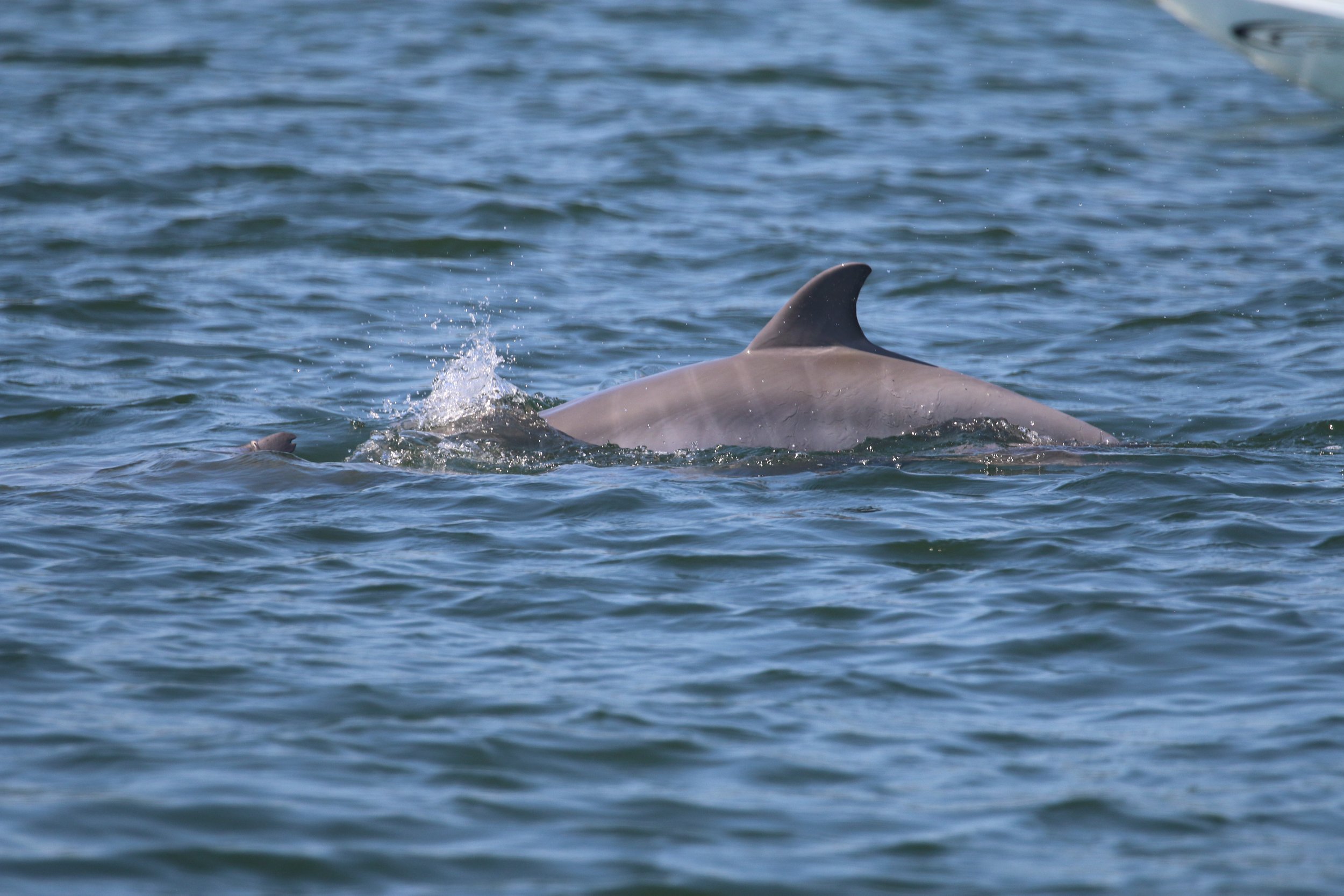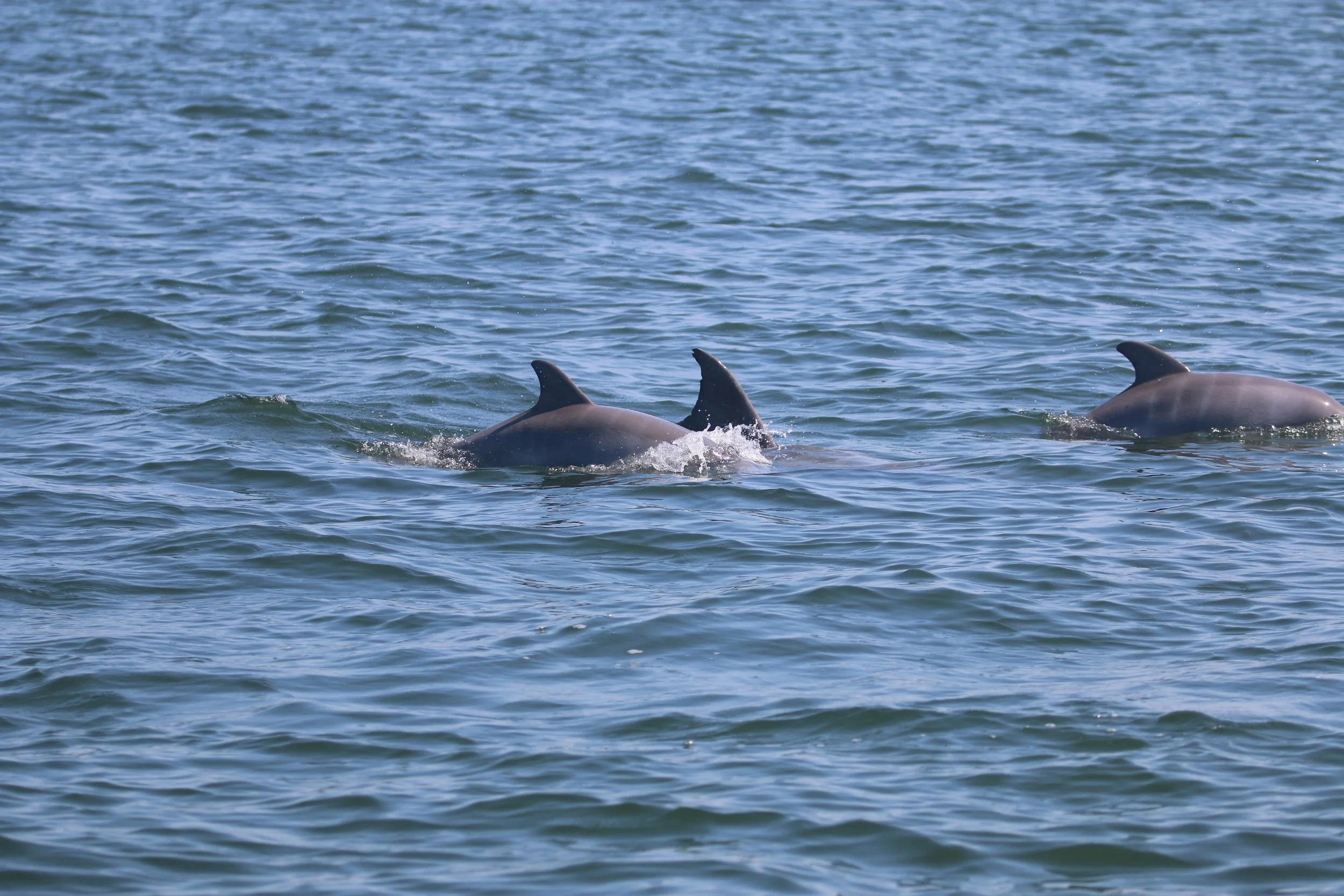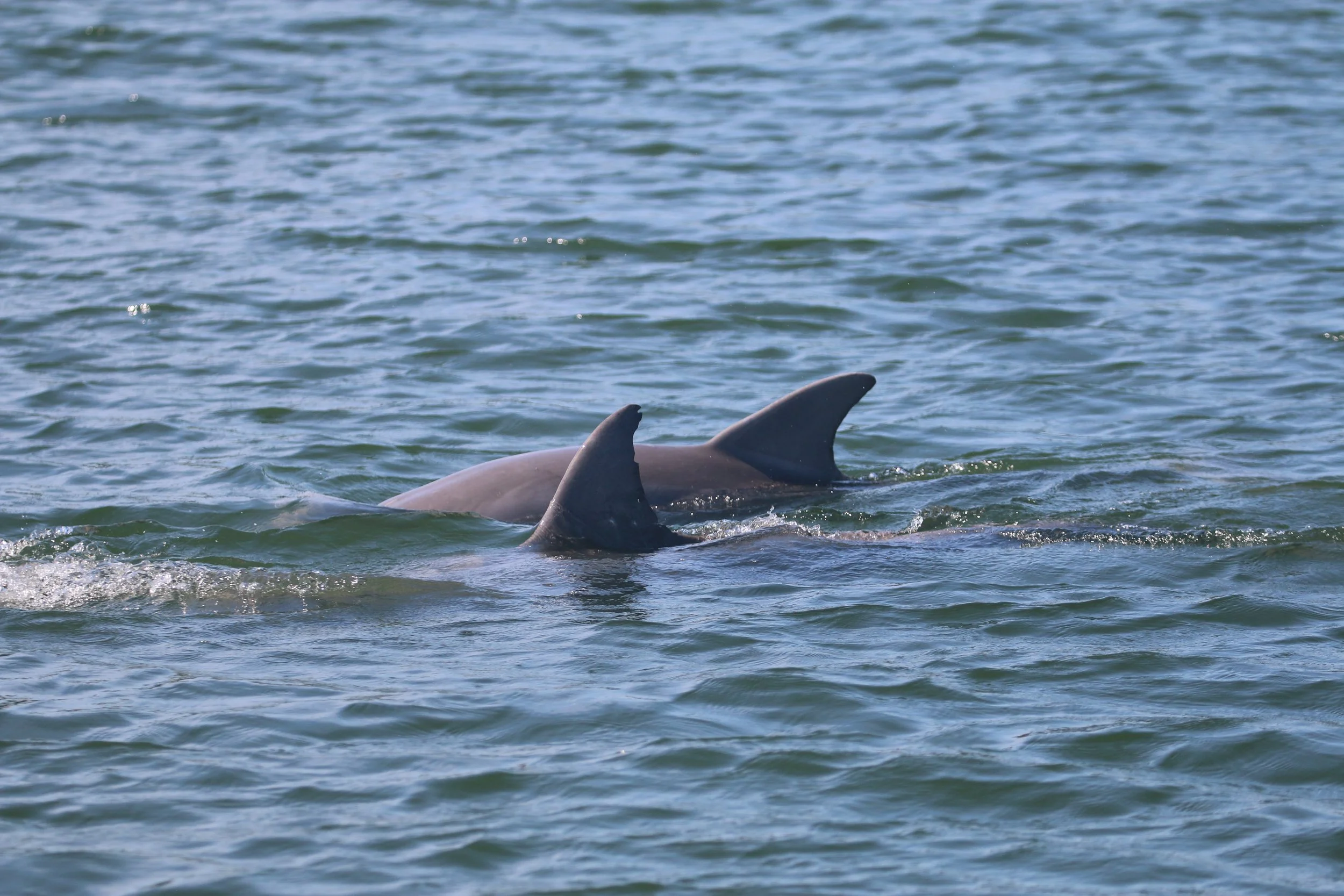Dolphin detectives pull out all the stops to identify one mysterious dolphin (PART 2)
/Ask an Expert: Verena Conkin, Potomac-Chesapeake Dolphin Project
IMAGE COURTESY OF Verena Conkin, THE POTOMAC-CHESAPEAKE DOLPHIN PROJECT. TAKEN UNDER NMFS Permit No. 23782
Verena Conkin
Biologist and PhD Candidate at Georgetown University studying dolphin behavior and ecology with the Potomac-Chesapeake Dolphin Project.
What we learned in Part 1: Dolphin mystery recap
In Part 1, I shared how one unexpected visitor in the Potomac River last summer left me and my colleagues puzzled.
While observing mother-calf pairs, the Potomac-Chesapeake Dolphin Project’s (PCDP) researchers spotted one female whose fin and markings were unfamiliar. After spending time searching pages and pages of previously photographed dolphins, we realized we had a mystery on our hands. Who exactly was this dolphin? (Read Verena’s account in Part 1 here)
Meet our mystery dolphin: FB401
IMAGE COURTESY OF Verena Conkin, THE POTOMAC-CHESAPEAKE DOLPHIN PROJECT. TAKEN UNDER NMFS Permit No. 23782
The PCDP is part of a larger network of research projects along the East Coast, and each year we submit our data to the Mid-Atlantic Bottlenose Dolphin Catalog (MABDC), curated at Duke University. Over 30 collaborators submit their dolphin sightings, making a rich collection of records, some dating back to the 1970s.
From the MABDC records, we learned our mystery dolphin was originally known as FB401 when she was sighted by the National Marine Fisheries Service in 1998 off of Fort Story in Virginia Beach. She was 2 meters long, about the size expected for a 3-year old dolphin, meaning she was probably newly weaned and learning how to be independent.
After her initial sighting, reported sightings came in every few years up until 2013, mostly off of Virginia Beach and in Roanoke and Pamlico Sounds in North Carolina (map). But after being spotted off Virginia Beach in October 2013, there was nothing for 10 years until we honed in on her near the mouth of the Potomac River.
As a nearly 30-year-old female, she’s undoubtedly lived an eventful life. She may have had her first calf in the late 2000s, making her an experienced mother by the time of our June survey.
IMAGE COURTESY OF Verena Conkin, THE POTOMAC-CHESAPEAKE DOLPHIN PROJECT. TAKEN UNDER NMFS Permit No. 23782
Her fin is tall, with some shallow nicks and chips she acquired over the years, and pale scars crisscross her body where other dolphins have raked their teeth. Tooth rake scars are extremely common, particularly on juveniles and male adults, as well as females who are in a reproductive state. In our photos, these scars are faint and healing, maybe leftover from consortships before she became pregnant with her new calf. Given her age, she has probably raised multiple calves, and some of her offspring may well be parents themselves by now.
In the weeks that followed, we saw her and her baby a few more times out on the water. On July 12, we were hurrying back to the marina as wind and waves intensified, and our work became nearly impossible when I glimpsed a familiar fin in a small group, barely visible in the whitecaps. Her calf was bigger than in June, growing quickly, and the fetal lines that were so distinct weeks earlier were starting to fade. We paused long enough to snap a few photos, and turned back to the marina.
That was her last sighting for 2023.
It’s not unusual for the dolphins we see in the early summer to depart midway through our field season. If she returns in 2024, she’ll get an official name in our catalog. Taking our direction from her first identifier from 1998, Professor Janet Mann, Director of the PCDP, has proposed FB401 take on the name Fanny Brice after the famed 20th-century comedian.
Conserving our River
While just getting to see the dolphins each year is amazing, it’s even more incredible to get to know them each and see them year after year. We’re fortunate as researchers to be part of a large collaborative effort that enables us to do a deep dive into these animal’s individual stories and histories.
I’m personally grateful to Kim Urian, as well as the MABDC collaborators who shared their data with us to paint a fuller picture of her life, specifically Annie Gorgone, Jessica Taylor, and Amy Engelhaupt. Given how highly mobile dolphins are, record-sharing like this is critical to understanding their population structures and life history, and our individual work goes so much farther when we contribute to collective efforts like the MABDC.
Being part of this collaboration is also critical when trying to address the threats these dolphins face. Issues like pollution, vessel traffic, and disease act have far-reaching impact, and coordinated efforts are needed to help address these problems. Individual dolphin’s stories can help us see more clearly where we need to take action, and how a person, community, town, or state can all have an impact through stewardship, advocacy, and fighting for cleaner water.
IMAGE COURTESY OF Verena Conkin, THE POTOMAC-CHESAPEAKE DOLPHIN PROJECT. TAKEN UNDER NMFS Permit No. 23782
This story of one dolphin also reminds me why we spend so much time gathering our data and poring over countless photos.
Until this past year, FB401 had not been seen for a decade, and it’s unclear if she had ever been sighted with a calf before. Now, after all her travels over nearly 30 years between Virginia and North Carolina, we know that she headed past her Virginia Beach stomping grounds and turned north in the spring of 2023 to have her calf in the Chesapeake where the Potomac River flows into the Bay. Maybe her other calves have been born here as well, or maybe this was her first visit–we’ll keep learning more as our work continues.
The PCDP team will start our 2024 field season in mid-May, and by June, we’ll be seeing dolphins regularly in the area. When they do arrive, I’ll be hoping to spot her tall, notched fin and a year-old calf next to her.
Data & Photo-ID Submission Acknowledgements: Any Engelhaupt with HDR Inc. supporting the U.S. Navy’s Marine Species Monitoring Program, Annie Gorgone previously at the NOAA Beaufort Laboratory, Jessica Taylor of the Outer Banks Center for Dolphin Research, and Kim Urian with Duke University Marine Lab.











